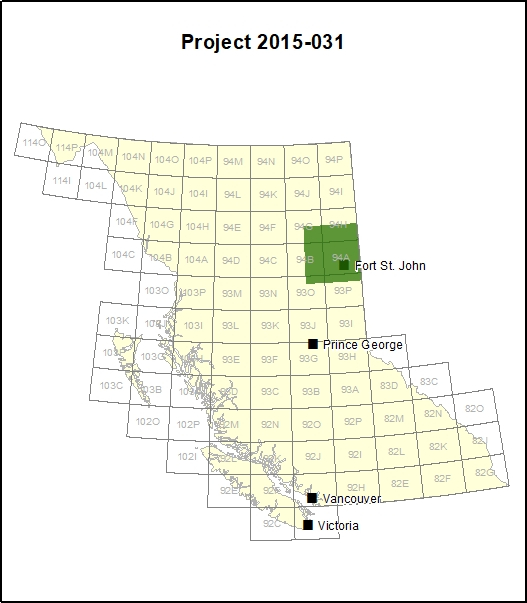The Need
Additional research related to earthquakes caused by natural gas development – known as induced seismicity – is one of four research focus areas recommended in the Ministry of Energy, Mines and Petroleum Resources’ March 2019 Scientific Review of Hydraulic Fracturing in British Columbia report.
This project aimed to address public, environmental and safety concerns as well as helping to develop protocols to manage and mitigate the risk of seismicity.
Project Goals
This project fits under Geoscience BC’s Strategic Objective of ‘Facilitating Natural Resource Development’ and our goal to:
- Maintain joint research with partners examining seismicity induced by hydraulic fracturing in northeastern BC to provide new science to better understand induced seismicity, mitigate risks and further improve regulation and industry practices.
Specifically, this project:
- Further develops understanding of the variables and processes controlling induced seismicity in the Montney Play, in order to reduce and mitigate the potential magnitude and occurrence of induced seismic events.
- Provides information to help optimize seismic monitoring dense array designs.
Project Benefits
Monitoring and improving knowledge of seismic events in northeastern BC helps to reduce and manage risk.
The project monitored well pads in the Montney Play using a dense array of specially adapted, low cost and mobile sensors developed for British Columbia’s earthquake early-warning system.
The dense array is capable of detecting smaller (M <1) events. This data can be used for detailed monitoring studies and proactive mitigation of induced seismicity.
What Was Found
Researchers designed, built, and tested a dense telemetered array of up to 15 stations with accelerographs paired with geophones to monitor hydraulic fractures and fluid disposal operations. This provides data not available through broadband arrays or single force-balanced accelerometers.
It was demonstrated that a dense array of accelerographs is required to map asymmetrical attenuation observed for M >1.5 seismic events, and can be used to help understand whether an event will be felt or cause damage at the surface. It was also demonstrated that the geophone array can attain the technical information needed for small- to micro-seismicity, which may assist induced seismicity mitigation and provide data and comparative results for modelling.
The report demonstrates that 3D hydro-geomechanical modelling can be used to better understand the processes and parameters that control induced seismicity in the Montney Play.
Survey Area
The Montney Play, Northeastern BC.
 This project aimed to provide a better understanding of the nature of seismic events relating to hydraulic fracturing and water disposal in the Montney Play area in British Columbia’s Northeast Region, to guide new monitoring methods and ways of reducing and managing risk.
This project aimed to provide a better understanding of the nature of seismic events relating to hydraulic fracturing and water disposal in the Montney Play area in British Columbia’s Northeast Region, to guide new monitoring methods and ways of reducing and managing risk.